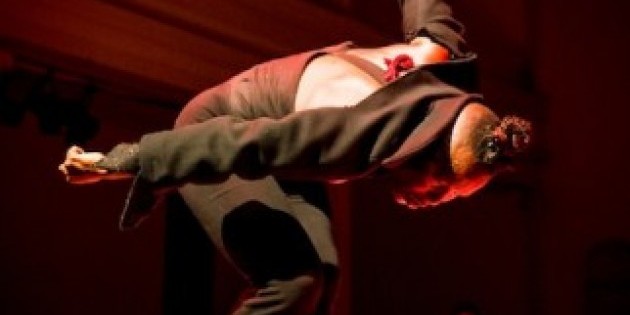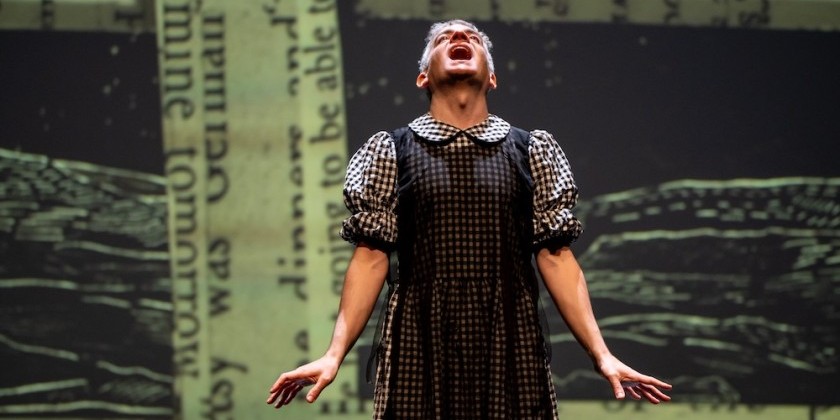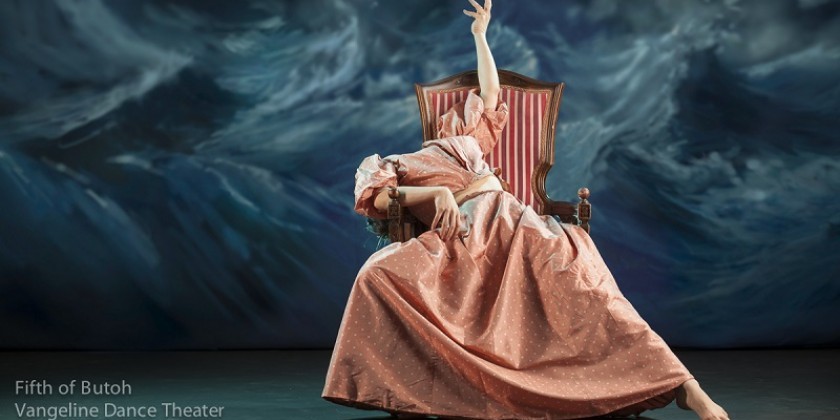IMPRESSIONS: Platform 2012 Parallels Curated by Ishmael Houston-Jones with New Works by Nora Chipaumire and Okwui Okpokwasili

Backbone
Platform 2012 Parallels curated by Ishmael Houston-Jones
New Works: Nora Chipaumire and Okwui Okpokwasili
Bronx Gothic: Written, performed, original songs by Okwui Okpokwasili
Director/Designer: Peter Born
Lighting Design: Peter Born and Carol Mullins
The Last Heifer: Choreographed and performed by Nora Chipaumire
Music: Traditional
Lighting Design: Carol Mullins
Costume design: Naoko Nagata
©Cory Naksue for The Dance Enthusiast
I just looked up “let your backbone slip” on Google because, a) I wanted to make sure that I used the term correctly, and b) I wanted to see if it had an African origin, and c) it was the phrase that kept going through my head as I watched the first ten minutes of Okwui Okpokwasili’s solo, Bronx Gothic at Danspace. I looked it up because for some vague reason I felt that I didn’t own that phrase. It felt like it was “black phrase.” I’m not black—and yet, I knew that was exactly what she was doing up on stage.
IanDouglas.jpg) |
| Okwui Okpokwasili’s Bronx Gothic , Photo by Ian Douglas |
It’s difficult to write about a show that is at least in part about being black without personally being black, but wanting to address the “blackness” of it. I’m tempted to use and assume cultural signifiers that aren’t a part of my personal experience, but they are part of my cultural language. What those “signifiers” would be is a topic for a whole other piece. But, I think that these are the kinds of questions that Ishmael Houston-Jones’ Parallels 2012 platform is hoping to raise. What is black? Is black necessarily African? Who can claim black?
When I watch a tremendous performer like Okpokwasili gyrate to a percussive score like a woman possessed, and then transform herself into an actor of immense self-possession, I don’t think too much about her African heritage or her Bronx upbringing. But, as I sit here and write about it, I certainly do. This line of inquiry into how I read other cultures is inspired Houston-Jones and the complex study of identity in Bronx Gothic.
IanDouglas.jpg) |
| Okwui Okpokwasili’s Bronx Gothic ,Photo by Ian Douglas |
The centerpiece of Bronx Gothic is a story told by the back-and-forth note writing of two very, ahem, knowledgeable and candid eleven-year-old girls during their sexual awakening. Okpokwasili ,through subtleties in posture and voice and arresting language (physical and prose), created a fully realized cast of characters. The aforementioned gyrations, stark lighting, and the delicate songs sung by Okpokwasili made for a palpably rich and evocative foray into the power, shame, and mystery of sex.
The press for Nora Chipaumire, the second performer on this bill read, “the new work brawls with the iconography of black womanhood.”
IanDouglas.jpg) |
| Nora Chipaumire's The Last Heifer Photo by Ian Douglas |
And brawl it does. The Last Heifer is a re-writing of another solo of hers, Dark Swan. There is a wilderness full of animals in this solo and all of them are predators. The excrutiating slow motion, muscle-tensing displays of potency and entitlement led me to envisage a hawk swooping over its prey, or a bull getting ready to charge.
There is rage bubbling beneath the surface, but it is always under control. Painstakingly undulating her spine and unfurling her massive wingspan, hands clenched in fists, and breasts rising and falling out of a black bustier-like top, Chipaumire ritualistically circles the edge of a platform with no change in dynamic. There are some minor shifts in choreography, but the only really noticeable changes are the accumulating amount of sweat falling from her brow and the occasional grunt.
IanDouglas.jpg) |
| Nora Chipaumire'sThe Last Heifer Photo by Ian Douglas |
The Last Heifer could be a physical polemic against subservience, a meditation on endurance, or a tribute to black female formidability. Chipaumire makes no pleas or attempts at seducing the audience. It is at some points laborious to sustain my participation as an audience member. Despite her mammoth presence, the piece leaves space for me to mentally enter and leave as I please. The embodiment of raw power can be alienating.







![IMPRESSIONS: Will Rawls' “[siccer]” at the Keith Haring Theatre at Performance Space New York](/images/features_large/20251119_WillRawls_siccer_PerformanceSpaceNY_WhitneyBrowne--55.jpg)




